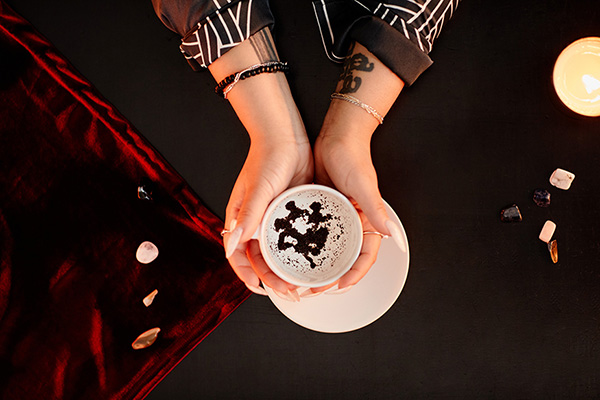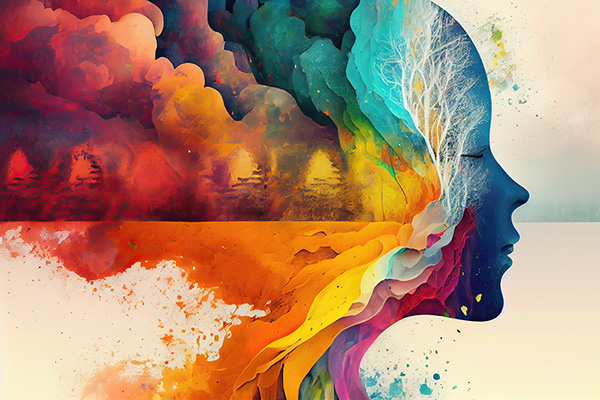spiritual traditions
The Spiritual Symbolism Of The Circle
 The circle has a profound and universal meaning in spirituality across cultures and belief systems. It symbolizes a variety of spiritual concepts and offers insights into the interconnectedness of life, the cyclical nature of existence, and the infinite potential for growth and transformation.
The circle has a profound and universal meaning in spirituality across cultures and belief systems. It symbolizes a variety of spiritual concepts and offers insights into the interconnectedness of life, the cyclical nature of existence, and the infinite potential for growth and transformation.
The circle represents unity and oneness. It is a symbol of completeness because it has neither beginning nor end. This circular continuity reflects the eternal nature of the soul and the interconnectedness of all living beings.
In Native American spirituality, for example, the medicine wheel represents balance and harmony between all aspects of life, including the physical, emotional, mental, and spiritual. Similarly, in Hinduism, the concept of samsara refers to the continuous cycle of birth, death and rebirth, with the circle symbolizing the eternal journey of the soul.
In Christianity the circle represents eternity and sacred union. It is referenced in the Bible as the shape of heaven, and as the beginning and ending of time. For Christian couples, the unending circle of a wedding ring is also the symbolic expression of their sacred, eternal union.
The Spiritual Virtue Of Patience
 Patience is considered an essential virtue in most spiritual and religious traditions for several reasons. It is consistent with the core values and teachings of various spiritual paths and belief systems.
Patience is considered an essential virtue in most spiritual and religious traditions for several reasons. It is consistent with the core values and teachings of various spiritual paths and belief systems.
Many spiritual practices emphasize the importance of maintaining a state of inner calm in the midst of life’s challenges. Patience is fundamental to achieving inner peace and serenity. Patience helps us maintain a sense of serenity even in the face of extreme adversity.
Patience also enables us to surrender to the universal flow and accept the divine timing of outcomes for our highest good. We are better equipped to accept the divine plan and trust in the unfolding of events and circumstances as they are meant to be. Patience signifies our belief in a higher power and the universal order of all things.
Through patient introspection and self-reflection, we learn to understand our own thoughts, feelings, and behaviors, which leads to spiritual growth and self-improvement.
Impatience leads to negative emotions such as anger, frustration, and resentment. By practicing patience, we can better control and manage these emotions, which promotes emotional well-being and spiritual harmony.
Without patience, it is also difficult to develop understanding and empathy for others. Being patient with our own flaws and imperfections, as well as those of others, promotes the spiritual qualities of empathy and kindness.
Embrace The Fall Equinox In Mind, Body And Soul
 As the vibrant colors of summer begin to fade and the air becomes crisper in the northern hemisphere, we stand on the threshold of the fall season of transition and transformation. It is a sacred time to prepare our minds, spirits, and bodies for the winter months ahead.
As the vibrant colors of summer begin to fade and the air becomes crisper in the northern hemisphere, we stand on the threshold of the fall season of transition and transformation. It is a sacred time to prepare our minds, spirits, and bodies for the winter months ahead.
Today’s autumnal equinox is a poignant reminder of the cycles of life and the eternal rhythm of nature. Steeped in ancient tradition and folklore, this celestial event occurs each year around September 21st and marks the point at which day and night are of nearly equal duration. Spiritually, it symbolizes equilibrium; a momentary pause in time between the warmth of summer and the cold of winter. It invites us to reflect on balance and harmony.
Ancient civilizations held a deep reverence for celestial events such as the autumnal equinox, which were often seen as significant markers of time and the cycles of nature. The traditional interpretations and beliefs surrounding the autumnal equinox varied from culture to culture, but they generally recognized its importance in agricultural, spiritual, and cultural contexts, and saw it as a time of transition, balance, and connection between heaven and earth.
In many agricultural societies, the autumnal equinox signaled the time of the year’s harvest. The ancient Egyptians and Babylonians celebrated this event with festivals and rituals dedicated to their agricultural deities. This often included feasting, music, and offerings to ensure a bountiful harvest.
How To Do A Tea-Leaf Reading
 When I do a teacup reading, I let my mind to run free as I interpret the symbols in the tea leaves for the client. There are standard traditional guidelines as to what different shapes may symbolize, but I prefer to let my intuition do the talking.
When I do a teacup reading, I let my mind to run free as I interpret the symbols in the tea leaves for the client. There are standard traditional guidelines as to what different shapes may symbolize, but I prefer to let my intuition do the talking.
Interpretation of the tea leaves is subjective, and there is no one right way to do it. Different readers will interpret the same patterns differently.
However, there are some common symbols one will often find in the bottom of the cup include animals, human faces, and all kinds of everyday objects. Symbols grouped together can create a theme, and sometimes the tea leaves spell out letters of the alphabet or numbers.
Tea-leaf reading is also known as tasseography, tasseomancy or tassology. Tasseography is also done by reading wine sediments and coffee grounds. This divination practice possibly originated in China, where tea was first cultivated, and may have evolved from the Chinese traditions of divining the patterns left by the dregs of wine in a cup, as well as the patterns created by the smoke from incense sticks.
Tea itself was first introduced to Europe in the 17th century and thus tea-leaf reading spread to other parts of the world. Among the first Europeans to embrace the practice were the traveling Romani people, who sometimes offered is as a door-to-door service. Tea-leaf reading also became popular in Victorian times as a parlor game.
Like Tarot reading or scrying a crystal ball, tea-leaf reading is a divination method for accessing the universal consciousness via the subconscious mind. Slowing down the rational, analytical mind allows us to focus on our intuition to receive divine guidance.
The Modern Practice Of Spiritual Healing
 In a world driven by science and technology, the value of our spiritual health is rarely recognized or appreciated these days, yet it is an essential aspect of our holistic health and well-being.
In a world driven by science and technology, the value of our spiritual health is rarely recognized or appreciated these days, yet it is an essential aspect of our holistic health and well-being.
The truth is that spiritual healing has been practiced since the beginning of time to promote physical, emotional, mental and spiritual well-being. Our ancestors were much wiser in this regard. They had a holistic view of health and wellness that not only focused on the physical and mental, but also honored the spiritual or metaphysical aspects of our existence.
In ancient Egypt, for example, illness was treated as a battle between good and evil, and magical remedies were used in addition to herbal medicines. In ancient Greece, holism underpinned everything, and the soul, mind, and body were considered one.
In Traditional Chinese Medicine, a holistic system practiced for at least 23 centuries, healing is achieved by balancing the yin-yang life force energies that permeate everything in the universe. In the indigenous healing traditions of Native America, holistic health is represented by the four quadrants of the ‘medicine wheel’ or ‘sacred circle,’ namely the physical, emotional, mental, and spiritual states of being.
In Christianity, spiritual healing is documented with many references to the healing power of faith and prayer. The Bible also refers to the spiritual gift of healing, and there are several accounts of Jesus performing miraculous healings. In Hinduism, Ayurveda is a five-thousand-year-old Vedic system of medicine that seeks to restore the balance between the body, mind, and spirit.

